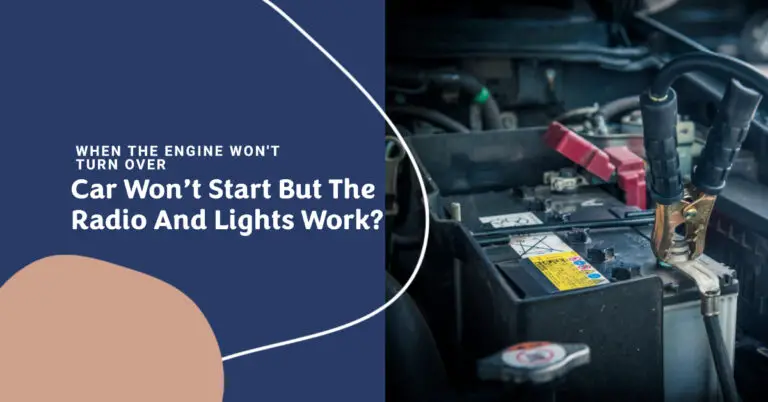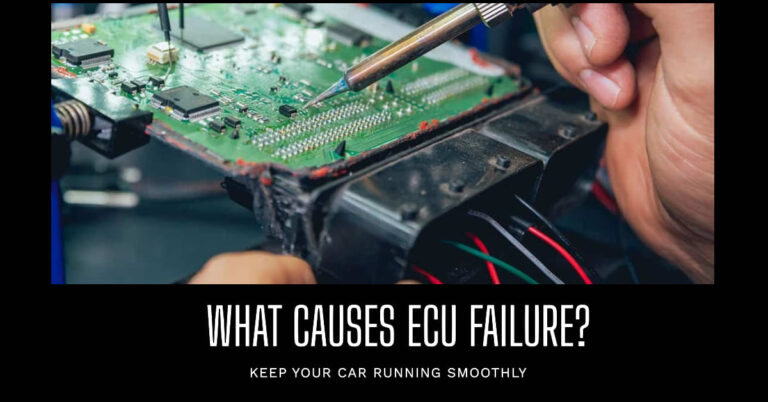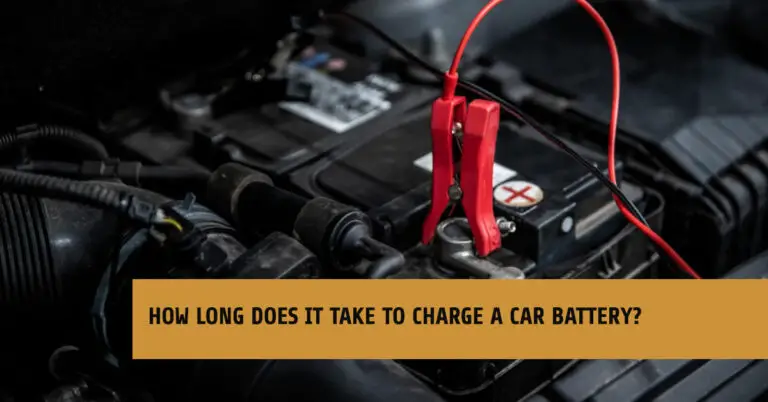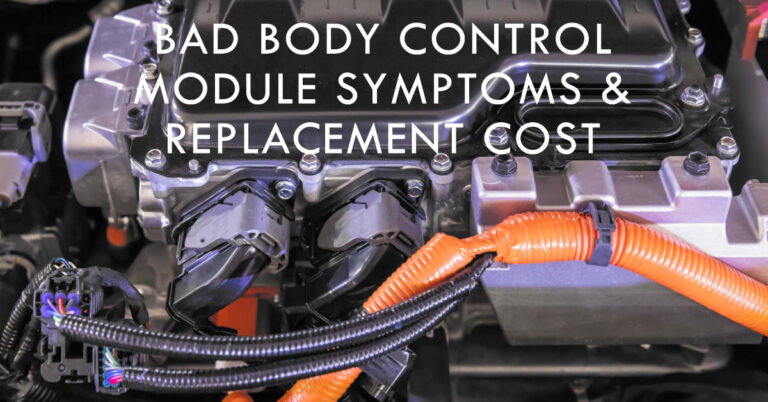Tail Lights Not Working But Brake Lights Are? Fixed!

Have you ever hopped in your car at night, flipped on the headlights, and noticed the brake lights glow red but the tail lights stay depressingly dark? Annoying, right? Dealing with temperamental tail lights that seem to have a mind of their own is incredibly common. But while driving around with no functioning tail lights is unsafe and usually illegal, figuring out what’s causing the issue and how to repair it can be frustrating.
Let’s first clearly define the problem:
Your brake lights illuminate when you press the brake pedal, but your tail lights won’t turn on. So what gives?
Typically it’s due to a fairly straightforward electrical problem in the wiring or components leading to the tail lights. With some basic diagnostic testing and troubleshooting, you can likely track down the culprit and get your tail lights glowing again yourself. Or if electrical issues aren’t your thing, your local professional mechanic has the know-how to properly diagnose and fix the issue.
In this detailed guide, we’ll walk through the most common reasons your tail lights may not be working even when the brake lights function normally. I’ll provide actionable steps you can take to test circuits and components yourself to find and repair the problem. And explain when it makes sense to hand things over to an experienced auto electrician versus DIY.
By the end, your tail light electrical gremlins will be banished for good! Here’s exactly what we’ll cover:
- Common electrical issues that cause tail light failure
- Step-by-step troubleshooting you can do to diagnose the problem
- How to check bulbs, fuses, wires, sockets, and connections
- When it’s best to call a professional for repair
- Safety tips for driving with non-working tail lights
Let’s kick things off by going over the most likely culprits for tail lights that refuse to turn on…
Table of Contents
The Usual Suspects: Common Electrical Problems That Cause Tail Light Failure
When your tail lights suddenly stop working but the brake lights still illuminate, there are a handful of components in the electrical system that could be the root cause. Here are the most common electrical issues that can cause tail light problems:
Blown Tail Light Fuse
Just like most other electrical circuits in your vehicle, the tail lights get their power through fuses in the fuse box. Over time, a fuse can blow due to normal wear or a temporary power surge. A blown fuse interrupts the flow of electricity and shuts off the lights.
Start troubleshooting by locating the tail light fuse and checking if it appears damaged. Replace any blown fuses and test the lights. If the new fuse immediately blows again, there’s likely a short circuit somewhere that needs to be addressed.
Faulty Tail Light Relay
Relays are essentially electrically-controlled switches. They receive power from the fuse box and toggle it on or off to the tail lights. The relay takes the brunt of the electrical load instead of pushing all that current through the light switch. If the relay sustains internal damage, it can fail to send power to the tail lights.
Testing the relay and swapping in a working replacement can get your tails glowing again. We’ll cover how to do that later in the step-by-step troubleshooting section.
Damaged Tail Light Switch
The light switch itself can also be the culprit for tail lights not turning on. The switch makes contact when you rotate it to the “tail lights on” position, allowing power to flow. But over years of use, the contact points inside the switch can become corroded or worn. This prevents solid contact and cuts off the current for the tail lights.
Testing for power at the switch and replacing it if needed can get things working again. An experienced mechanic may be needed depending on the car model and complexity of removing the switch.
Burned Out Light Bulbs
Before you start digging into electrical components, check to make sure it’s not simply a burned-out bulb causing your tail light problems. Either bulb can burn out independently of the other. Quickly swap the left and right bulbs to see if the problem moves sides. If so, you’ve found your culprit. Replace any bulbs that appear damaged or have stopped glowing.
Loose, Corroded, or Damaged Wiring
Finally, deteriorated or disconnected wiring is a common source of electrical gremlins in any vehicle. Vibrations and environmental factors take their toll over the years. Wire insulation can become cracked or connections can come loose. This can cause intermittent shorts that turn tail lights off.
Thoroughly inspect the wiring leading to the tail lights and watch for any damage. Loose connectors covered in dirt and corrosion can stop current flow. Exposed copper wires touching the chassis or touching each other causes harmful shorts. Repair any wiring issues you come across to get your lights functional again.
Alright, now that you know the most common things that can cause tail light problems, let’s go step-by-step through troubleshooting the issue on your own vehicle…
How To Troubleshoot and Diagnose Non-Working Tail Lights Yourself?
Armed with some fundamental knowledge of vehicle electrical systems, you have the power to take on tail light diagnosis yourself. Here is a methodical process you can follow to track down the root cause:
Step 1 – Check The Bulbs
Make sure you don’t simply have a burnt-out bulb before moving to more complex testing. Check both the left and right tail light bulbs. Do they appear damaged or no longer glowing? Replace any bulbs that are clearly not working.
While you’re there, remove each bulb and carefully re-seat them. Sometimes vibration can jiggle a perfectly functioning bulb loose leading to no light. Re-insert the bulb and test the lights again.
For an added check, swap the left and right tail light bulbs temporarily. If the problem switches sides, you confirmed it’s just a bad bulb. Replace it with a compatible new bulb from your local auto parts store.
Step 2 – Check The Fuses
Next focus your attention on the fuses. Use the owner’s manual or fuse diagram for your vehicle to locate the tail light fuse(s) in the fuse box. Pull them out one-by-one and visually inspect each for damage.
A working fuse should appear solid with intact metal inside. A blown fuse will likely have melting or breakage visible. If you spot any blown fuses, replace them with a new fuse of the same amperage rating. Push it into the appropriate slot until you feel it click into place.
With the new fuses inserted, try the tail lights again. If the fuse immediately blows again, there is likely a short circuit somewhere in the wiring that needs to be addressed before replacing the fuse again.
Step 3 – Check Wiring and Connections
Now you can start hunting for loose connections or damaged wires causing an issue. First, focus on wiring between the fuse box and the tail light relay. Gently wiggle connections and wiring while trying the tail lights. If the lights momentarily come on, a loose wire is likely.
Use a small wire brush or sandpaper to remove dirt and corrosion from electrical connectors. Separate and reconnect them to ensure a solid contact. Inspect wiring for any cracks, scrapes, or melts in the insulation that could cause a short.
Follow the entire length of tail light wiring visually inspecting for issues and wiggling connections. Repair or wrap any problem areas with electrical tape. If the lights come back on, problem solved!
Step 4 – Test the Relay
If you’ve checked bulbs, fuses, and wiring without success, the tail light relay may be faulty. First check for power getting to the relay itself. With the tail light switch on, use a multimeter volt tester to see if current is arriving at the relay location.
No power means there’s an open circuit upstream you’ll need to hunt down. Power at the relay means it’s likely faulty. Remove the relay and shake or tap it firmly. Reinstall and see if it’s working now after jostling the internal contacts.
For a more definitive test, swap the tail light relay with a matching relay for another circuit (ex. fog lights, AC) that you confirm is working properly. If the tail lights turn on with a known-good relay installed, you found the bad part. Replace it with an exact replacement relay to resolve the problem.
Step 5 – Check The Light Switch
If you determine the relay seems okay, the next thing to check is the tail light switch itself. With the tail lights activated, use a multimeter to check for 12V power at the output side of the switch where the wire connects.
If your multimeter reads 12V, the switch is doing its job of passing power when turned on. But no power at the switch terminal indicates the problem is within the switch itself.
The contact points may be corroded or worn out. Try tapping on the switch a few times to reseat the contacts then test again. If still not passing power, the switch needs replacement by a technician.
Safety Tips For Driving With Non-Working Tail Lights
While the best solution is repairing your tail lights soon as possible, I realize that may not always be immediately feasible. If you have to drive with tail lights malfunctioning, keep these safety tips in mind:
- Only operate the vehicle when absolutely necessary. Avoid driving at night if possible.
- Use hand signals when braking so those behind you know you’re stopping.
- Ask a passenger to watch out the rear window for other drivers as an extra set of eyes.
- Add temporary accessory lights to the rear of your car for extra visibility. Many options are available that adhere with magnets.
- Alert other drivers that your tail lights are out by turning on your hazard flashers when not braking.
- Reduce speed to allow more reaction time for other motorists to notice your car.
- Pull over and stop driving immediately if road conditions or traffic get precarious.
While inconvenient, non-working tail lights is a situation you want to remedy sooner than later. Not only is it unsafe, but you also run the risk of being pulled over and ticketed by police who notice the issue. Let’s talk about when it’s best to seek professional help…
When To Call A Professional Tail Light Repair Specialist?
Up to this point we’ve covered troubleshooting steps and repairs you may be comfortable tackling yourself at home with some fundamental tools and skills. But in some situations, it’s best to hand things over to an auto electrical repair specialist.
Signs it may be time to have a professional diagnose and repair your tail light issues include:
- You’ve methodically checked bulbs, fuses, wiring, relays, and switch to no avail. The root cause may require deeper electrical system diagnosis.
- The existing wiring has extensive damage, improper repairs, or complicated modifications that are unsafe to work with.
- The electrical problem is very intermittent or random, making it hard to isolate on your own.
- You simply don’t have the time or patience for extensive troubleshooting and just want it fixed properly ASAP!
- You lack the knowledge, tools, or skills for safe electrical diagnosis. No shame in admitting your limits!
In these cases, turning things over to a qualified auto electrician is the wise choice. They have specialized tools to efficiently test circuits and pinpoint problems. And the expertise to make quality repairs the first time.
Get Your Tail Lights Working Again!
Few things are more annoying than dealing with car electrical issues that seem to defy logic and troubleshooting. Like your tail lights refusing to glow even though the brake lights work fine. While frustrating, a methodical approach testing fuses, bulbs, wiring, relays, and switches can uncover the real culprit.
Equipped with some fundamental knowledge, you can likely sort out your tail light problems at home. If needed repairs are beyond your current skills, an auto electrical specialist has the tools and know-how to get you fixed up.
Either way, stay diligent until you get it remedied. Cruising down the highway with fully illuminated tail lights is the safest solution for you and those sharing the roads. Drive on in confidence with all your exterior lighting functioning properly!







